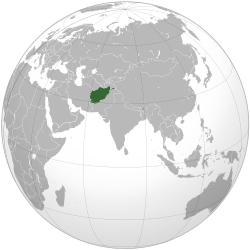A Regional Solution For Afghanistan: Demystifying ‘Plan B’ Of The West – Analysis
By IPCS
By J Jeganaathan
Ever since President Obama announced the pull out of US troops (almost 33,000) from Afghanistan by summer of 2012, the international community has been puzzled to find a face-saving exit from Afghanistan. Multiple scenarios have been proposed and discussed as to what will happen to Afghanistan after the withdrawal, though the exact nature of troop drawdown is not yet known. Overall, except the incumbent Afghan government headed by President Hamid Karzai, everyone seems to have resigned to largely pessimistic (bad, worse and worst case) scenarios on Afghanistan.

Yet, the West has promulgated what it believes to be a “Regional Solution” for Afghanistan. Is this a feasible strategy? What does this signify? This article demystifies the international community’s effort to push forward the idea of ‘Regional Solution’ as their last resort to escape from this quicksand.
‘Regional solution’ for a stable and secure Afghanistan seems to be one of the multiple strategies that have been suggested to deal with the Afghan quagmire. This could be the best plausible ‘Plan B’ for the western powers to exit Afghanistan without disgrace. However, what exactly does the West mean by this ‘regional solution’? To understand this, it is imperative to know the various factors that have kept Afghanistan politically fragile and volatile despite a decade-long US-led international military campaign to stabilise and civilise Afghanistan.
On the whole, the US-led International Security Assistance Force (ISAF) Military mission in Afghanistan has failed dramatically due to three major reasons: its inability to eliminate Taliban and control insurgency, unsuccessful attempts to build a new Afghanistan with strong political, economic and military institutions to withstand both internal and external adversities and incapacity to contain Pakistan’s dubious role as a source for instability in Afghanistan.
Is “Regional Solution” a “Strategy of Abandonment”?
Geographically, Afghanistan is seen as a bridge between South Asia and Central Asia connecting two grand civilisations and two distinct regions. Given this fact, the Obama Administration has been placing greater emphasis on a regional strategy for Afghanistan, especially after Osama’s death. By pronouncing a Regional Solution for Afghanistan what the US means – is to pursue a regional strategy that would enable the regional actors to deal with the Afghan problem. One should not forget the core objective of the US in the so-called war on terror campaign that lasted for a decade is to eliminate al-Qaeda and its leaders. With that objective achieved, it would be naive to believe or expect that they would stay in to modernise or civilise a country which struggles to retain its medieval legacy. Perhaps, the tacit meaning of this strategy could be to keep the Taliban and other insurgents out, India and Turkey in and Pakistan and Iran down.
Regional Solution has rather, become a safe “exit strategy” for the US and its allies for two reasons. First, the Afghan National Force (ANF) is not capable of undertaking their national security responsibility once the NATO troops vacate. Second, there is less guarantee of financial aid flow into Afghanistan from western countries after the withdrawal because of rampant corruption and nepotism in the present government. So, the best way is to hand over the country to regional players who claim direct or indirect stakes, to decide its political fate and future.
As part of this strategy, a series of international conferences have been organised by the US from April 2011 onwards with specific focus on Afghanistan. Of these two regional initiatives are important: Istanbul process on Afghanistan in November 2011 and the Delhi Investment Summit in June 2012.
The Istanbul Summit on Afghanistan was held in November 2011 under the rubric of “Friendship and Cooperation in the Heart of Asia”, and emphasised regional security cooperation for a secure and stable Afghanistan. Turkey, a NATO member from this region was the flag-bearer of this idea, and initiated it with the full backing of the US. It advocates regional cooperation and mechanism to solve the Afghan problem through multiple levels of dialogues on variety of issues concerning Afghanistan’s future. On the other hand, the Delhi Investment Summit on Afghanistan held in June 2012 promised to build Afghanistan’s economy through foreign investments.
It is quite obvious that Turkey has taken a regional leadership role in fostering security cooperation in the region to solve the Afghan crisis. India has taken a lead role in building Afghan economy by foreign investments in mining sectors. Both India and Turkey enjoy the blessings and backing of the US and western countries, which needs a trustworthy partner or ally from this region.
If this tacit reading of the regional strategy is accurate, then it is easy to conclude that the west is preparing to abandon Afghanistan in the near future. The most plausible scenario then would be the bifurcation of Afghanistan into two provinces: Northern and Southern Afghanistan governed by different Loya Jirgas. Though not a highly desirable endgame, but bifurcation of Afghanistan would still be better than its balkanisation along ethnic lines.
J Jeganaathan
Research Fellow, IReS, IPCS
email: [email protected]
